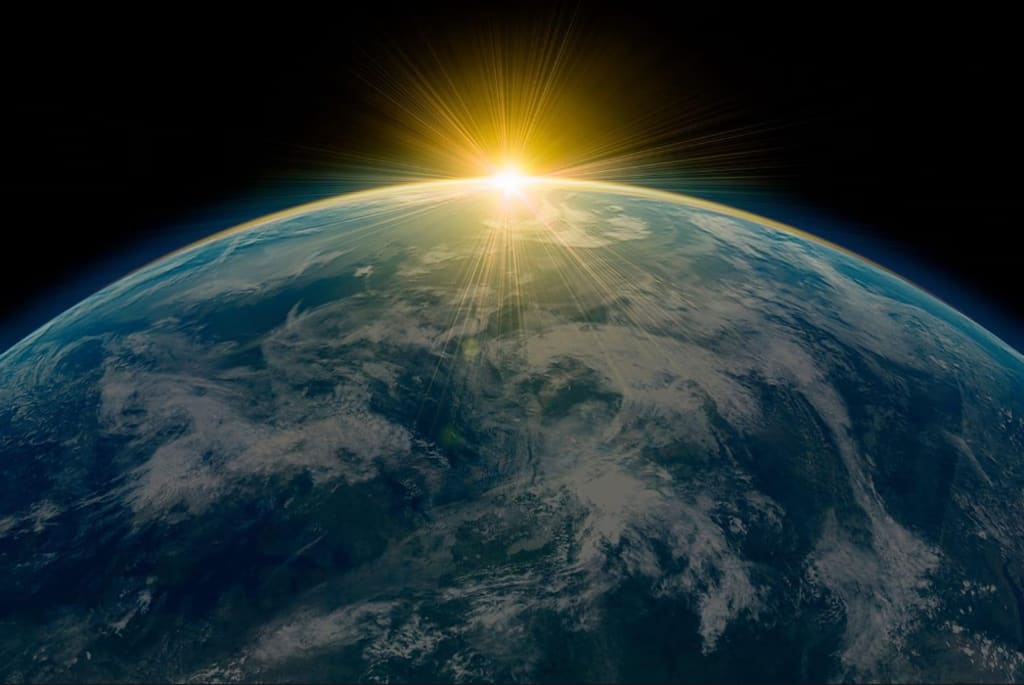
The Earth's climate has changed dramatically over the past 500 million years, with periods of warming and cooling. These changes have been caused by a variety of factors, both internal and external.
One of the most dramatic climate changes in Earth's history occurred 66 million years ago when an asteroid impact wiped out the dinosaurs and many other species. The impact caused a massive dust cloud to block out the sun, leading to a sharp drop in temperatures.
After the asteroid impact, the Earth's climate began to warm again. This warming was caused by a combination of factors, including the release of greenhouse gases from the decaying asteroid and the movement of the continents.
The Earth's climate continued to change over the next few million years, with periods of warming and cooling. One of the most significant cooling events occurred 34-35 million years ago when the Himalayas and other mountain ranges formed. These mountains blocked the flow of warm air from the tropics, leading to a global cooling trend.
The Earth's climate has continued to change since then. The past few centuries have seen a sharp increase in greenhouse gas emissions, which have caused the planet to warm at an unprecedented rate. This warming is causing a variety of changes to the Earth's climate, including rising sea levels, more extreme weather events, and changes in plant and animal life.
The future of the Earth's climate is uncertain. If greenhouse gas emissions continue to rise, the planet will continue to warm, with potentially devastating consequences. However, if we take action to reduce greenhouse gas emissions, we can slow the pace of climate change and protect our planet for future generations.
The middle myocene disruption
Around 14 million years ago, the Earth's climate experienced a sudden and dramatic change. This event, known as the middle myocene disruption, was caused by a combination of factors, including the movement of the continents, the formation of the Isthmus of Panama, and the reversal of the Earth's magnetic field.
The middle myocene disruption had a profound impact on the Earth's climate. The average global temperature dropped by about 6 degrees Celsius, and the Earth's ice sheets began to grow. This led to the extinction of many species, including many of the large mammals that lived at the time.
The middle myocene disruption is a reminder that the Earth's climate is constantly changing. These changes can be caused by a variety of factors, both natural and human-made. It is important to understand these changes so that we can take steps to protect our planet from the effects of climate change.
The Pleistocene
The Pleistocene was a period of extreme climate variability. The Earth experienced repeated cycles of warming and cooling, with the ice sheets growing and shrinking dramatically. These changes were caused by a combination of factors, including the Milankovitch cycles, which are variations in the Earth's orbit around the sun.
The Pleistocene was also a time of great human evolution. Our ancestors migrated to different parts of the world, and they developed new technologies that allowed them to survive in harsh conditions.
The Pleistocene ended about 11,700 years ago, with the start of the Holocene epoch. The Holocene has been a relatively stable period, with the Earth's climate remaining relatively warm. However, in recent decades, the Earth's climate has begun to change again, and scientists are concerned that we are entering a new period of global warming.
The future of the Earth's climate
The future of the Earth's climate is uncertain. If greenhouse gas emissions continue to rise, the planet will continue to warm, with potentially devastating consequences. However, if we take action to reduce greenhouse gas emissions, we can slow the pace of climate change and protect our planet for future generations.
It is important to remember that the Earth's climate is a complex system, and it is difficult to predict how it will change in the future. However, we know that human activity is having a significant impact on the climate, and we need to take action to reduce our emissions if we want to protect our planet.
About the Creator
A. Meep
Hello, I'm a Meep. A creative soul who's been feeling a little lost lately. My creativity has been long since forgotten, like the Lost City of Atlantis. But I'm not giving up! I'm attempting a Disney to find it! Hope you got the reference






Comments
There are no comments for this story
Be the first to respond and start the conversation.